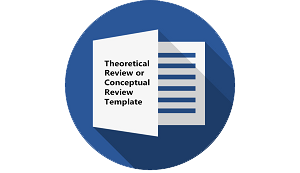An Analysis of Lexical Cohesion in Donald Trump's Speech to the UN General Assembly 2017
DOI:
https://doi.org/10.30957/ijoltl.v5i3.635Keywords:
Lexical Cohesion, Speech, Donald Trump, Politic, UtteranceAbstract
The aim of this research is to define a linguistic framework based on Donald Trump's manuscript at the 2017 General Assembly since Trump is an influential person in the world and it was essential to note how the impact of his speech could have a strong effect on audiences. This research uses a descriptive qualitative approach to analyze and describe the types of lexical cohesion of HallidayHasan (1976) and Renkema's Theory (2004). In regard, the researchers analyze the most frequently known types of lexical cohesion following the analysis of the data and drawing conclusions based on the results. The findings showed that 80 data were found and 36 data included repetitions, 10 synonyms, 2 general terms, 3 superordinates, 10 collocations, 5 hyponymies, 6 antonyms, 27 anaphoras, and no cataphora and metonymy found in this analysis. After analyzing the results, the most dominant type found was repetition, which meant emphasizing their speech to show how powerful the American and show profound admiration for others.
Downloads
References
Brown, G & Yule, G. (1983).Discourse Analysis. Victoria: Cambridge University Press.
Chilton and Schäffner as cited by Dung Dang. (2020). Grammatical Cohesion in Political Discourse of Vietnameese Newspaper and English Newspaper.International Journal of Advanced Scientific Research and Management, Volume 5 Issue 2, 2 February 2020.DOI: 10.36282/IJASRM/5.2.2020.1697.
Cook, G. (1995). Discourse and Literature: The Interplay of Form and Mind.Hong Kong: Oxford University Press.
Donald Trump Biography.com.(2017).Retrieved September 21 2017from https://www.biography.com/people/donald-trump-9511238.
Gove cited by Edmonds and Hirst. (2002). Near-Synonymy and Lexical Choice.Journal of Computational Linguistics. 28(2).http://www.cs.toronto.edu/pub/gh/Edmonds+Hirst-2002.pdf
Halliday and Hasan.(1976). Cohesion in English.London: Longman.
Kreidler, C.W.(2010) Introducing English Semantics. New York: Routledge.
Partington, A, Charlotte, T. (2010).Persuasion in Politics a Textbook. Milano: LED EdizioniUniversitarie.
Renkema, Jan. (2004).Introduction to Discourse Studies. Amsterdam: John Benjamin.
Renkema, Jan. (2009). Discourse, of Course, An Overview of Research in Discourse Studies. Amsterdam: John Benjamin Publishing Company.
Saefudin.(2020). Lexical Cohesion Roles in Speech Rhetorical Strategy of 2006 U.S Presidential Debate, Trump vs Clinton. InsaniyatJournal of Islam and Humanities. Vol 4(2) May 2020. DOI: 10.15408/insaniyat.v4i2.15119.
Novi N, and Widyashanti, K. (2020). Lexical Cohesion Analysis on Adele’s Songs Lyrics in the Album 25. Surakarta English and Literature Journal. Vol 3 No 1 February 2020. DOI: http//dx.doi.org/10.29240/selju.v3i1.360.
Yule, G. 2010. The Study Of Language. New York: Cambridge University Press.
Vidya, M and M. Zuhri F. (2020). Grammatical and Lexical Cohesion Analysis of Trump’s Speech UponSoleimaniAsassination. Journal Basis. Vol 7 No.1 April 2020. DOI: https://doi.org/10.33884/basisupb.v7i1.1753.
Downloads
Published
How to Cite
Issue
Section
License
Authors who publish with this journal agree to the following terms:
- Authors retain copyright and grant the journal right of first publication with the work simultaneously licensed under a Creative Commons Attribution-ShareAlike 4.0 International License that allows others to share the work with an acknowledgement of the work's authorship and initial publication in this journal.
- Authors are able to enter into separate, additional contractual arrangements for the non-exclusive distribution of the journal's published version of the work (e.g., post it to an institutional repository or publish it in a book), with an acknowledgement of its initial publication in this journal.
- Authors are permitted and encouraged to post their work online (e.g., in institutional repositories or on their website) prior to and during the submission process, as it can lead to productive exchanges, as well as earlier and greater citation of published work (See The Effect of Open Access).












